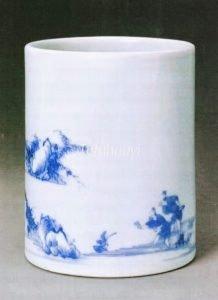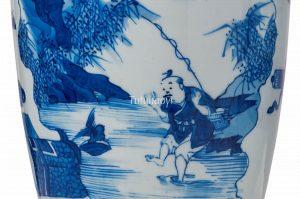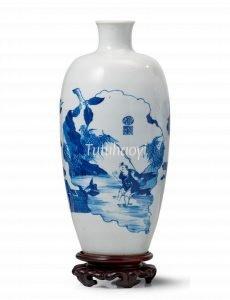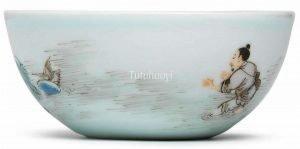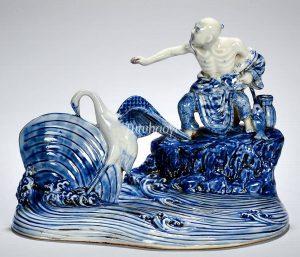In the fight between the sandpiper and the clam, the fisherman has the best of it
鹬蚌相争, 渔翁得利
© Tutuhaoyi.com owns the copyright of the description content for the images attached. Quoting all or part of the description content on this page is permitted ONLY IF ‘Tutuhaoyi.com’ is clearly acknowledged anywhere your quote is produced unless stated otherwise. (本页描述内容版权归Tutuhaoyi.com所有,转发或引用需注明 “Tutuhaoyi.com”, 侵权必究, 已注开源信息的条目除外。)
The story scene refers to an old Chinese saying: in the fight between the sandpiper and the clam, the fisherman has the best of it. This parable came from an ancient Chinese text entitled ‘Strategies of the Warring States (战国策 Zhanguo Ce)’. The book contains anecdotes of diplomacy and warfare during the Warring States period (5th to 3rd centuries BC).
The State of Zhao (赵国) was planning to attack the State of Yan (燕国). Su Dai (苏代) was sent by the State of Yan to the State of Zhao to try to prevent the imminent calamity. During the audience that Su Dai had with King Huiwen of Zhao (趙惠文王, 310-266 BCE, r. 298-266 BCE), he found a clever way to persuade the king to change his mind. Here is Su Dai’s speech:
When I was leaving my country crossing the Yi River (in the present-day Yi County, Hebei province), I saw a clam lying open, enjoying the sunshine on the bank. Out of the blue, a sandpiper flew down and tried to snatch a morsel to eat between its shells. The clam promptly slammed its shells shut, locking the sandpiper’s beak in between. The sandpiper tried to wriggle out of the situation, saying, ‘If it doesn’t rain today and it doesn’t rain tomorrow, there will be a dead clam on the river bank.’ The clam retorted, ‘If I don’t let you go today and nor do I tomorrow, there will be a dead sandpiper on the river bank.’ While they grappled in a dead lock, a fisherman passed by and picked both up with very little effort. Now, if your majesty launched an attack on Yan, Yan would certainly try to resist your invasion. And the fight between the two countries would make both weak and then the State of Qin would be acting as that ‘fisherman’. I urge your majesty to reconsider your plan.
The king of Zhao got the message from Su’s story and called off the military campaign.
As a cautionary tale, this parable has been favoured by Chinese people for two millennia and has often been made into 2D or 3D images to educate the young.
Read Dr Yibin Ni‘s research blog here regarding how this important pictorial motif was rediscovered from previous research papers and museum catalogues that only took it as genre painting.
Fig 1: blue-and-white brush holder, Kangxi period (1662-1722), Qing dynasty, courtesy of Palace Museum, Beijing
Fig 2-3: porcelain bottle vase with underglaze blue decoration, Kangxi period (1662-1722), Qing dynasty, courtesy of Christie’s auction, 4-12 April 2018, Lot 19
Fig 4: porcelain wine cup, Yongzheng period (1723-35), Qing dynasty, courtesy of Bonhams HK auction, 28 Nov 2017, Lot 29
Fig 5: porcelain sculpture, Republic period (1911-49), courtesy of Guan Fu Museum
